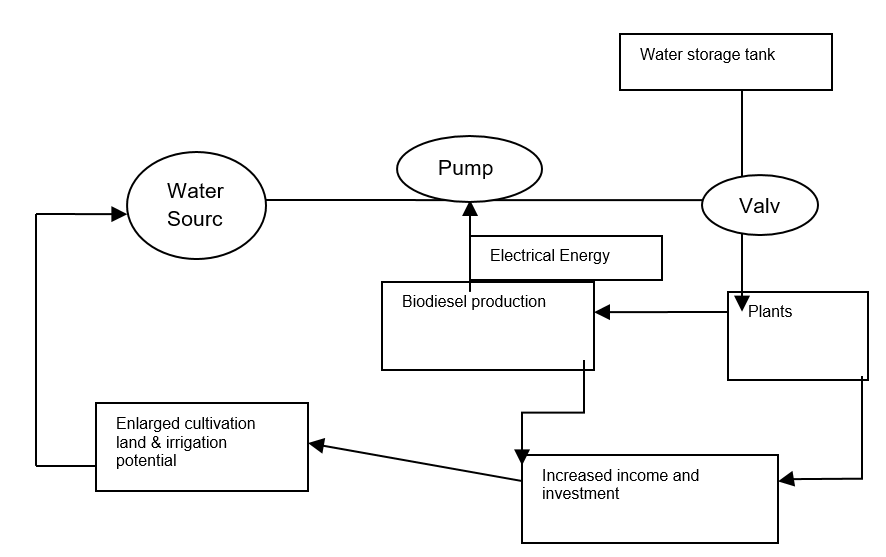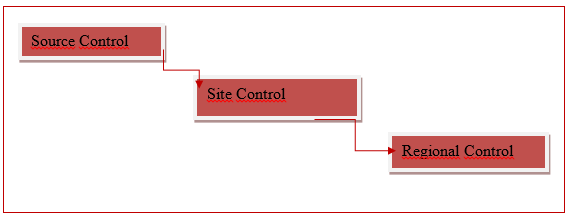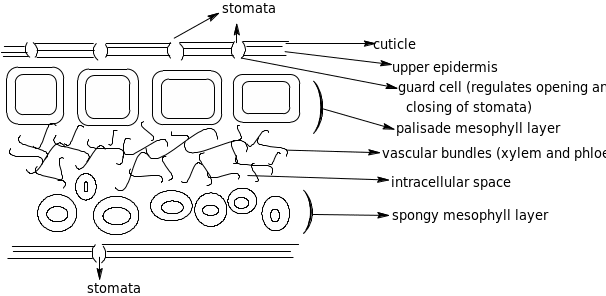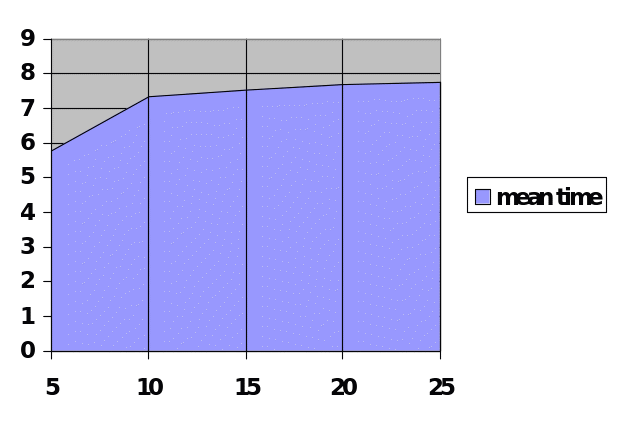Abstract
This experiment investigates the rate of photosynthesis by the determination of the time taken for the leaf segment to rise from the bottom of a beaker to the surface. The experiment tested the hypothesis that the rate of oxygen produced can be used to determine the rate of photosynthesis. The results showed that the rate of release of oxygen determined the rate of rising of the leaf segment subject to utilization of carbon dioxide proving that the evolution of oxygen could be used to measure the rate of photosynthesis.
Outline of the experiment
Photosynthesis is a process that involves two stages namely the light stage and the dark stage. Intermediate products of the light stage are utilized in the dark stage. The light stage involves the enzymatic breakdown of a water molecule into oxygen radicals and hydrogen radicals. Oxygen gas released is used for respiration of got rid off through the stomata based on turgidity of the guard cells. Hydrogen radicals enter the dark stage where enzymatically controlled reaction results in a combination of hydrogen radicals with carbon dioxide to form building units of sugars (acetyl derivatives). The remainder of the report is organized as follows.
Chapter one provides information on photosynthesis and the stages through which different phases of photosynthesis undergo to form α or ß-glucose. Chapter two addresses a literature review on photosynthesis based on a determination of the rate of photosynthesis as a function of oxygen gas evolved. Chapter three provides the methodology of the study and the materials that were used. Chapter four discusses the results that were obtained. Chapter five addresses the conclusion and provides information on whether the objective of the study has been achieved or not.
Introduction
Reiss, Roberts and Monger (2000, p.573) argue that autotrophs are primary producers of food and include plants, algae and photosynthetic bacteria. Plants and algae are phototrophs because they depend on light to biosynthesize food from inorganic molecules. As primary food producers, plants and algae have different pigments that can absorb light energy. Gregory (1971, p.97) indicates that photosynthetic bacteria are chemotrophs because their photosynthetic process is independent of light.
Photosynthesis is a process through which autotrophs as primary producers in a food chain or food web biosynthesis food (carbohydrates) from inorganic sources of materials namely water and carbon dioxide. Photosynthesis takes place in leaves in spherical cell organelles known as chloroplasts that contain pigments that can absorb light. Reiss, Roberts and Monger (2000, 574) indicate that chloroplasts are located in the palisade cells of the leaf.
Light is an important element for photosynthesis because it is required during the first stage of photosynthesis known as photolysis. Photolysis is a process that involves the breakdown of water molecules into oxygen gas and hydrogen radicals and the process is exothermic because it involves the release of chemical energy. Photosynthesis occurs in two stages namely the light stage (photolysis or light-dependent stage) and the dark stage (light-independent stage).

Summary of the photosynthesis

The structure of the photosynthetic unit of the leaf
Photosynthesis occurs in chloroplasts that are primarily located in the palisade mesophyll layer that lies below the upper cuticle.

Govindjee (1975, p. 35) provides that chloroplasts form the building units of spongy mesophyll and palisade mesophyll layers. Chloroplasts are densely located in the palisade mesophyll layer. Stomata are more in the upper epidermis than the lower. Campbell and Reece (2005, p.114) indicate that the vascular bundles that comprise the phloem and the xylem are transport media for both raw materials of photosynthesis, products of photosynthesis and respiration as a mechanism for thermoregulation.
The role of vascular bundles
Absorption of water (contains mineral salts) occurs via the xylem under through processes like osmosis, active transport and is propagated by processes taking place in the leaves like transpiration via the stomata which create root pressure leading into a transpiration stream (Blackenship, 2002, p.156). Physical factors that affect transpiration rate include light intensity, temperature, humidity and velocity of the wind. Carbon dioxide is got from the air and this is regulated by the guard cells depending on the turgidity of the cells. Phloem is used for translocation of the photosynthetic products to respiring cells and tissues (Gregory, 1971, p. 98).
Biomass and photosynthesis
Biomass refers to the dry mass of a living thing. The biomass accounts for 10-30% of the total mass excluding mass due to water that accounts for 70-90% depending on the type of the living thing. Autotrophs have the highest biomass and support the other living organisms (Reiss, Roberts & Monger, 2000, 581).



Goals of the experiment
To determine the rate of photosynthesis in a segment of a spinach leaf (sample C3) by utilizing the rates of rising of the segments toward the bicarbonate solution
Hypothesis for testing
Hypothesis 1A: The process of photolysis results in the production of oxygen gas that accumulates in the intracellular spaces. The volume of the oxygen gas produced can be measured to determine the rate of photosynthesis.
Alternative hypothesis 1B: the amount of oxygen produced during photolysis does not automatically get used up during the dark stage of photosynthesis because respiration and photolysis may establish an equilibrium state when the guard cells are closed and at compensation point, the amount of oxygen produced during photolysis is used for respiration hence the dark stage does not continue. Therefore, photolysis that leads to the production of oxygen as a by-product is not a reliable measurement for the rate of photosynthesis unless the reaction is controlled and directed.
Literature review
There is no standard method that can be used to determine the rate of photosynthesis. The most common methods for measuring the rate of photosynthesis have been based on the measurement of the oxygen gas that is produced during the light stage of photosynthesis (Reiss, Roberts & Monger, 2000, 575). Many experiments that have been done on rates of photosynthesis investigating the effect of one factor have not been conclusive because the rate of photosynthesis is not affected by one factor. There are many limiting factors both abiotic and biotic. Different factors affect the rate of photosynthesis including environmental factors as well as structural factors that are meant to create adaptation to the external or environmental conditions (Reiss, Roberts & Monger, 2000, 577).
Background of the current experiment
The current experiment is based on the fact that immediately after photolysis, there occur accumulation of oxygen gas in the intracellular spaces. Evacuation of the oxygen produced could be used to determine the number of moles of the oxygen that have been produced hence determining the number of moles of glucose or monosaccharide produced including masses from the relative molecular mass of the monosaccharide.
In this experiment, a vacuum pump is used to evacuate insoluble oxygen in the intracellular space and in is replaced with a bicarbonate solution of sodium. The presence of bicarbonate solution in the intracellular spaces will cause the segments to sink due to an increase in density. During photosynthesis (dark stage) the bicarbonate solution undergoes decomposition releasing carbon dioxide. In the presence of light, photolysis occurs producing hydrogen radicals that react with carbon dioxide to produce simple sugars (Hexa-carbon monosaccharide units) with the release of oxygen which has a lesser density compared to carbon dioxide. The sparingly soluble oxygen will increase the volume of the leaf segment leading to the rise of the leaf segment to the surface.
Methodology of the experiment
Materials
- 600 Ml beaker
- Ice
- Tray or beaker to collect leaf segments
- Ring stand
- Large culture tube
- Bicarbonate solution
- Gooseneck lamp
- Spinach leaves
- Thermometer
- Hole punch
- Vacuum flask
- Methodology
Conditions for the experiment
Spinach leaf assay
Initial temperature (oC) = 20oC
Distances from bulb to culture (cM) =5, 10, 15, 20, 25
The wattage of the bulb =100
The procedure of the experiment
A 600 Ml beaker was partially filled with water to serve as a heat sink for absorbing heat from the lamp. It was set up at the base of the ring stand. A thermometer was placed in the beaker of water to record changes in temperature during the experiment. A bicarbonate solution was added to three-quarters of the beaker. A gooseneck lamp was set up near the ring stand and the wattage of the bulb was recorded.
Thirty segments of spinach leaf were punched using a cork borer or a round-hole punch. The thirty segments were placed in a vacuum flask that contained an infiltration solution. The flask was then connected to a vacuum pump. The vacuum pump was evacuated for one minute and swirled for thirty seconds to break loose air bubbles. This was repeated two times while ensuring there was no possibility of over-vacuuming to prevent rupture of the plant cells. The contents were then poured into a white enamel tray or beaker. The intensity of the light was decreased.
Presentation of the results
Results
Table 1: distances from the bulb to the culture solution at 25 centimetres.
Table 2: variable in centimetres against mean time in minutes.

Discussion of the results
The results show that the time required for attaining a given rise of segment increases as light intensity increases. The time required to achieve a given rise in the segment increases sharply between five and ten minutes and the slope decreases as the light intensity decreases. This means that as the light intensity increases, the rate of photolysis increases. A decrease in light decreases the rate of photolysis which implies that the photosynthesis is a function of light intensity if other limiting factors are held constant. The fact that the slope is almost uniform between the tenth minute to the twenty-fifth minute signifies that other limiting factor affect the rate of photosynthesis. By keeping the temperature constant through the addition of ice cubes, the influence of temperature as a physical factor that influences photosynthesis is controlled.
The hypothesis 1A is therefore confirmed and tested to be true. Within the limits of the experimental data, hypothesis 1B could not be tested to be true or false.
Conclusion
The amount of oxygen produced during the process of photolysis can be used to determine the rate of photosynthesis. The experiment, therefore, achieved its objective.
References
Blankenship, R. E. 2002. Molecular Mechanisms of Photosynthesis, Blackwell Science, p.156.
Campbell, N., & Reece, J., 2005. Biology 7th ed. San Francisco: Benjamin Cummings., p.114.
Govindjee, T. 1975. Bioenergetics of Photosynthesis, New York: Academic Press, p.35.
Gregory, R.P.F., 1971. Biochemistry of Photosynthesis, Belfast: Universities Press, p.98.
Reiss, M, Roberts M. & Monger, G., 2000, Advanced Biology, London: Longman, p. 573-579.